After a long 25 months off, The Hospitality Industry Technology Exposition and Conference (HITEC)—the world’s largest and oldest hospitality technology event—was back in action in Dallas as an in-person conference on September 27–30, 2021.

With the return, it was unclear how attendance would be given that COVID-19 is still a concern around the world. The result saw more than 4,000 attendees (60%)1 compared to over 6,600 in 2018,2 which was the highest attended conference in HITEC’s history.
Catering to an audience that represents multiple segments across the hospitality industry, HITEC showcases the industry’s latest innovations and provides top-notch education for attendees. In addition to its distinguished keynote sessions, HITEC hosted a program full of sessions covering trending topics and emerging technologies that have been top of mind for the industry over the past year, including food and beverage innovations, cybersecurity risks, ethical conundrums in technology, hyper-personalization, direct distribution vs. third-parties, digital hotels and more.
Here we’ll explore three of the hottest trends that were talked about extensively during the event and what they mean for the future of the hospitality technology industry.
Trend 1: Staffing Challenges
Many conversations at HITEC were centered around staffing challenges. The hospitality industry has been among those most negatively impacted by COVID-19—many people lost or left their jobs. It’s predicted that hotels will end the year down 500,000 jobs based on the pre-pandemic ratio, and an additional 1.3 million hotel-supported jobs are in still jeopardy.3
It’s taken over a year to see some recovery, but it has been slow and difficult. That’s because:
- Many hospitality employees have changed industries for higher paying jobs. A survey found that more than 50% of U.S. hospitality workers wouldn’t go back to their old jobs, and over a third aren’t even considering reentering the industry regardless of pay increase or incentive.4
- Hospitality workers are considered front-line workers, and many don’t want to return due to burnout, mental health and excessive stress and increased risks for their health.5
But even with shortages of staff the hospitality industry is getting creative, looking for ways that technology can fill the gap. Some solutions being explored include the following:
- Gig Staffing: Providing employees (like housekeepers) with the flexibility to take on shifts at their convenience.
- Robotics: Using technology like commercial robots for vacuuming carpets, making deliveries or preparing food items.
- Virtual Reality (VR): Applying VR to staff training as a powerful learning tool. For example, Oculus, the Facebook-owned VR headset maker, shared how thousands of Hilton corporate employees have used VR to learn what it’s like to work as a room service, housekeeping or front desk employee. This is in addition to VR and Augmented Reality (AR) being used to attract guests with interactive suites, virtual door keys and 4D travel excursions.
Trend 2: Contactless
The term “contactless” evolved tremendously over the past two years. Prior to COVID-19, when someone mentioned contactless it was typically about payments such as Apple Pay or Google Pay. Since then, contactless has expanded its reach and abilities for a superior guest experience.
Today, contactless includes self-service kiosks and mobile check-in and check-out. Customers can now use chatbots to receive automated and immediate responses to questions, or rely on texting for better communications between staff and guests during their stay. Instead of using a TV remote, guests can use their mobile devices to play the show of their choice or even stream a workout or game to a larger screen.
Trend 3: Cloud
One session at HITEC covered “How to Budget Technology Expenses.” At one point the speaker turned to the audience to ask, “How many of you are still using an on-premises solution?” About 90% of the room raised their hands. The main driver for keeping an on-premises solution was to alleviate concerns over connectivity reliability.
But in most cases, avoiding the transition to the cloud leaves hospitality organizations missing out. Migration benefits include more flexibility to support remote staff and greater cybersecurity, along with increased operational efficiencies and speedier data entry fueled by cloud-based back-office applications.
These trends and challenges currently facing the hospitality industry require organizations to be constantly evolving—this includes your IT solutions. If you’re unsure of what is needed to stay current—from a networking, security and collaboration perspective—Windstream Enterprise has the expertise and services to guide you. Just reach out, we are happy to help.
- Hotel-Online, “HITEC Returns to In-Person Event in 2021 With Success.” October 1, 2021.
- HospitalityNet, “HITEC Houston Makes History as HFTP’s Highest Attended Event in 65+ Years.” June 22, 2018.
- Hotel Management, “AHLA predicts hotel industry job losses for 2021.” May 4, 2021.
- Fortune, “The hiring crisis explained: over 50% of hospitality workers wouldn’t return to their old jobs for any reason.” July 8, 2021.
- WHO, “Frontline workers and COVID-19: coping with stress.” 2021.
